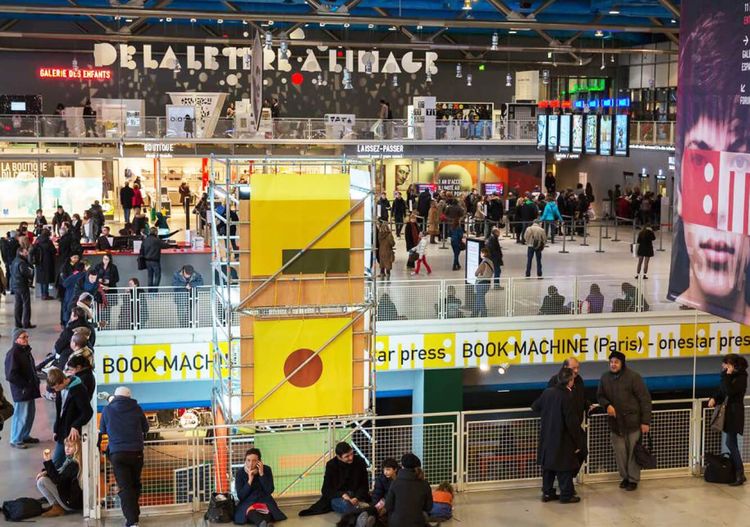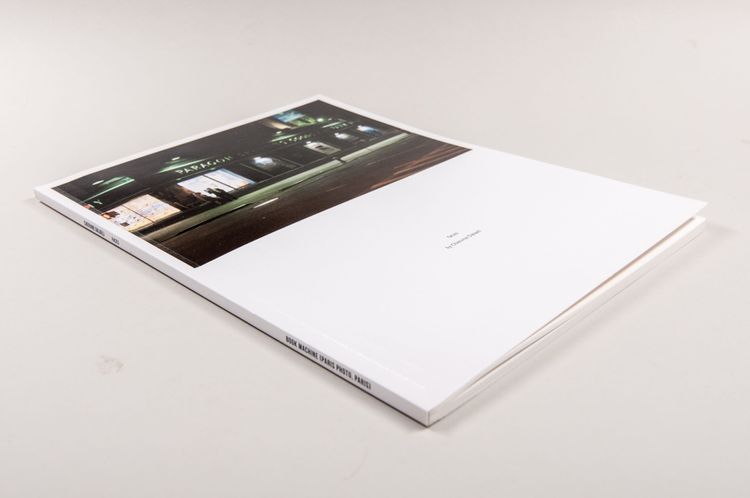From 2000 to 2019, Mélanie Scarciglia and Christophe Boutin ran the Parisian publishing house onestar press, which specialized in books and multiples by artists and used print-on-demand from the very beginning (and thus before the major print-on-demand platforms were established), which industrial printers such as Firmin Didot and ICN – Orthez already had in their portfolio at the time. In 2013, they developed a public book sprint as a new event format under the name BOOK MACHINE, which they have organized several times since then as part of the public program together with cultural, educational and art institutions worldwide. These events are open to everyone and aim at “connecting emerging designers and public participants through the creation of books” (project website).
Due to its low-threshold nature, print-on-demand is particularly suitable for such participatory projects that are intended to introduce laypeople to book production: The books are ready for pickup the next day, the print files are quite easy to create, and there is only a limited choice of formats and materials available. And the more rigid the formal specifications, the easier they are to work with and the more they shift the focus of bookmaking from the book object to the book idea and content. As a rule, the specifications for the books were: 100 pages (no more and no less) in black and white, imprint on page 99, cover in color, typeface and font size for the spine are also set. The standard formats differed depending on the production location: at Sidney II 2017 it was 14.0 x 22.5 cm, at Paris Photo 2015 it was 21.5 x 28.1 cm. The fact that the publications of a run are all in the same format and have a common look underlines the collective character of the events just as much as it makes visible the diversity, individuality, and creativity that are nevertheless wrung out of the same specifications.
The first edition of BOOK MACHINE took place in 2013 as part of Le Nouvel festival at the Centre Pompidou in Paris. Under the guidance of thirty student graphic designers from three distinguished art schools, each participant was given the opportunity to develop an understanding of the conception, design, and production of books in general and of print-on-demand books in particular, and to realize their own book idea in work sessions with a designer, usually lasting 2 to 3.5 hours. Each designer made two books per day. In total, more than 350 publications were produced in three weeks in the lower foyer of the Centre Pompidou, which artist Mika Tajima designed and furnished as a transparent, freely accessible “production factory” like a temporary publishing house. The books were each printed overnight with ICN – Orthez and publicly presented and discussed at the end. Each participant received one complimentary copy of their book, extra copies could be ordered and purchased at additional cost.
There were other BOOK MACHINE editions at the Blaffer Art Museum, Houston (Texas) in 2014; at the California Institute of the Arts, Los Angeles, in 2015; at the Peep-Hole Art Center, Milan, in 2015; at Paris Photo in 2015; and at Artspace Sydney as part of VOLUME | Another Art Book Fair in 2015 and 2017. In terms of content, the spectrum of the books produced is very broad; they often process biographical material or everyday life. Where the book sprints were organized by and in art institutions, there were often also projects with artistic pretensions in the tradition of the artist‘s book or photo book.
Participants and graphic design students were often found via a call. One of the things advertised was that graphic designers would receive an extra copy of each book they produced the very next day: “That means you could add as many as nine books to your personal collection and portfolio” (Call Out for designers, Sydney). The participants had to commit themselves to complying with guidelines as the following: “Though you are responsible for the content in your book, your designated designer has the right to refuse any content that they consider offensive. As BOOK MACHINE books are not published for public sale, the issue of copyright is not of concern.”

As a representative example of a book produced on a BOOK MACHINE, Chervine Dalaeli’s faces has entered our collection. Like all books, it bears the BOOK MACHINE logo designed by Mika Tajima and a reference to its context of creation on the occasion of BOOK MACHINE at Paris Photo 2015, powered by onestar press. It is a photobook that assembles b&w photographs of urban life in Paris and New York, which defy the clichés and phantasmagorias behind which the cities have disappeared and, according to Juan Asensio in his preface, allow us to see the cities in a new way.
As the author’s brief note on the first page reminds us, the production of the book at Paris Photo (November 12–15, 2015) was overshadowed by the tragic Paris terrorist attacks that took place on the evening of November 13, giving the photos in this book yet another twist: “All of this content may therefore represent a world ‘before.’ It is up to the reader to judge” (“Tout ce contenu représente donc peut-être un monde ‘d’avant’. Il reviendra au lecteur d’en juger.”). The BOOK MACHINE itself was discontinued during the intended run time due to the events.
